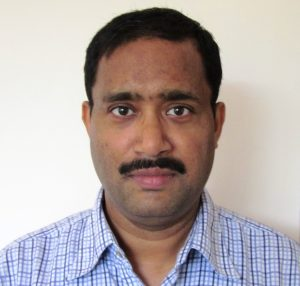
Tanmay Basak
Indian Institute of Technology, IIT Madras, India
Finite element analysis of natural convection in cavities with distributed solar heaters
The phenomenon of natural convection plays a significant role in various industrial and thermal processing applications. The conventional method of differential heating system within an enclosure may result in the inadequate thermal mixing and that may further lead to the poor thermal management. In order to enhance the overall thermal mixing, The discrete heating strategy may be considered as an attractive alternative. The major application of discrete heaters along the walls is solar thermal induced natural convection. The solar heating panel is an attractive option for energy optimization. In addition, many discrete heaters can be positioned along walls and the solar radiation can be used in cost effective ways. The single or double discrete heaters are positioned at various strategic locations along the walls of square cavities in order to enhance the effective mixing of fluid in the entire enclosure. This lecture elucidates natural convection within discretely heated square enclosures filled with fluid and porous medium. The energy flow visualization via heatlines and process efficiency via entropy generations have been shown to decide processing strategies.
Galerkin Finite element method has been implemented to solve momentum and energy balance equations. Finite element method is found to be novel for implementation on solving Poisson equation to obtain heatlines involving complex boundary conditions. Finite element based post processing is used for evaluation of entropy generation terms.
The heatline method has been implemented to visualize the heat flow pattern within the cavities for a wide range of parameters involving various dimensionless numbers. In order to solve the governing equations and Poisson equations for stream function and heart function, the Galerkin finite element method has been used. Heatlines are effective in explaining the complex heat flow patterns from the various discrete heating sources in the cavities. Further, the local and average Nusselt number are largely effective in illustrating the heat transfer distribution along the isothermal walls and discrete heaters. Lastly, the extent of thermal mixing is quantitatively measured using the cup-mixing temperature whereas the uniformity in the temperature distribution is evaluated using the root mean square distribution in each distributed heating case.
The energy efficiency of the various distributed heating strategies has been carried out using the irreversibility or entropy generation estimates. The entropy generation
A minimization approach has been implemented in order to analyze the destruction of available energy for the various thermal processing applications. The local maps of heat transfer and fluid friction irreversibilities are obtained for the various distributed heating strategies. Also, the heat transfer and fluid friction dominance during conduction or Convection dominant regime has been studied. In order to accurately estimate the entropy generation terms, a finite element based numerical procedure has been developed. The current algorithm has been validated with that of the previous works and they are found
to be in excellent agreement.
The heatline investigation involving fluid media case clearly illustrates the conduction
dominance at low Rayleigh number based on the end to end parallel heatlines whereas convective heatline cells are observed along with the wall to wall heatlines at high Rayleigh numbers. Common to all the cases, the heatline analysis involving porous media exhibits the onset of convection at lower Darcy number whereas enhanced convection is found to occur at high Darcy number based on the presence of intense fluid and heatline cells irrespective of Prandtl number. At the low Rayleigh and Darcy numbers, the dominance of entropy generation due to heat transfer is found to be higher over fluid friction whereas at the higher Rayleigh and Darcy numbers, the entropy generation due to fluid friction is largely dominant over thermal irreversibility within the cavities.
Overall, the heatline and entropy generation analysis clearly demonstrates that
distributed/discrete heating results in the enhanced thermal mixing and a larger extent of temperature uniformity throughout a large region in the square cavities for all types of fluids. This lecture also concludes that the effective utilization of energy resources for the processing of materials may be achieved by the thermal management policy based on the distributed heating strategy which significantly enhances the thermal mixing and temperature distribution with higher energy efficiency.
